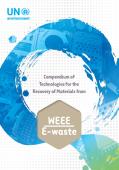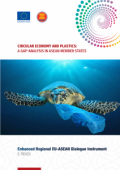This paper maps several dimensions of the e-waste problem and provides a snapshot into future challenges. It looks into what we can anticipate into how the use of e-products and management of e-waste could evolve.
This report shows the impact chemicals have on women as a vulnerable group highly exposed to hazardous chemicals and gender inequalities related to decision-making around the management of chemicals and waste.

This compendium describes information on commercially available or near commercially available technologies and associated techniques for resource recovery from WEEE/e-waste and subsequent treatment of residual wastes.
This assessment was aimed to provide United Nations regulators, international, regional, national and local decision-makers with predictive knowledge and a management tool on contaminants trends worldwide to support decisions of socio-economic value at all scales. This report contains a detailed description of the established methodology, an overall description of the database, six case studies among the Large Marine Ecosystems (LMEs; selected based on geographic distribution and information availability), a global assessment, conclusions, and recommendations.

Preventing and reducing plastic pollution is about more than waste management. This report applies a circular economy perspective to plastics and presents frameworks for addressing related sustainability challenges. A shift to a circular economy will require coordinated policy interventions at all stages of the life-cycle of plastics, including: resource extraction and refining, design and manufacture of products, trade and retail, use and reuse, recycling, and final disposal when necessary.
